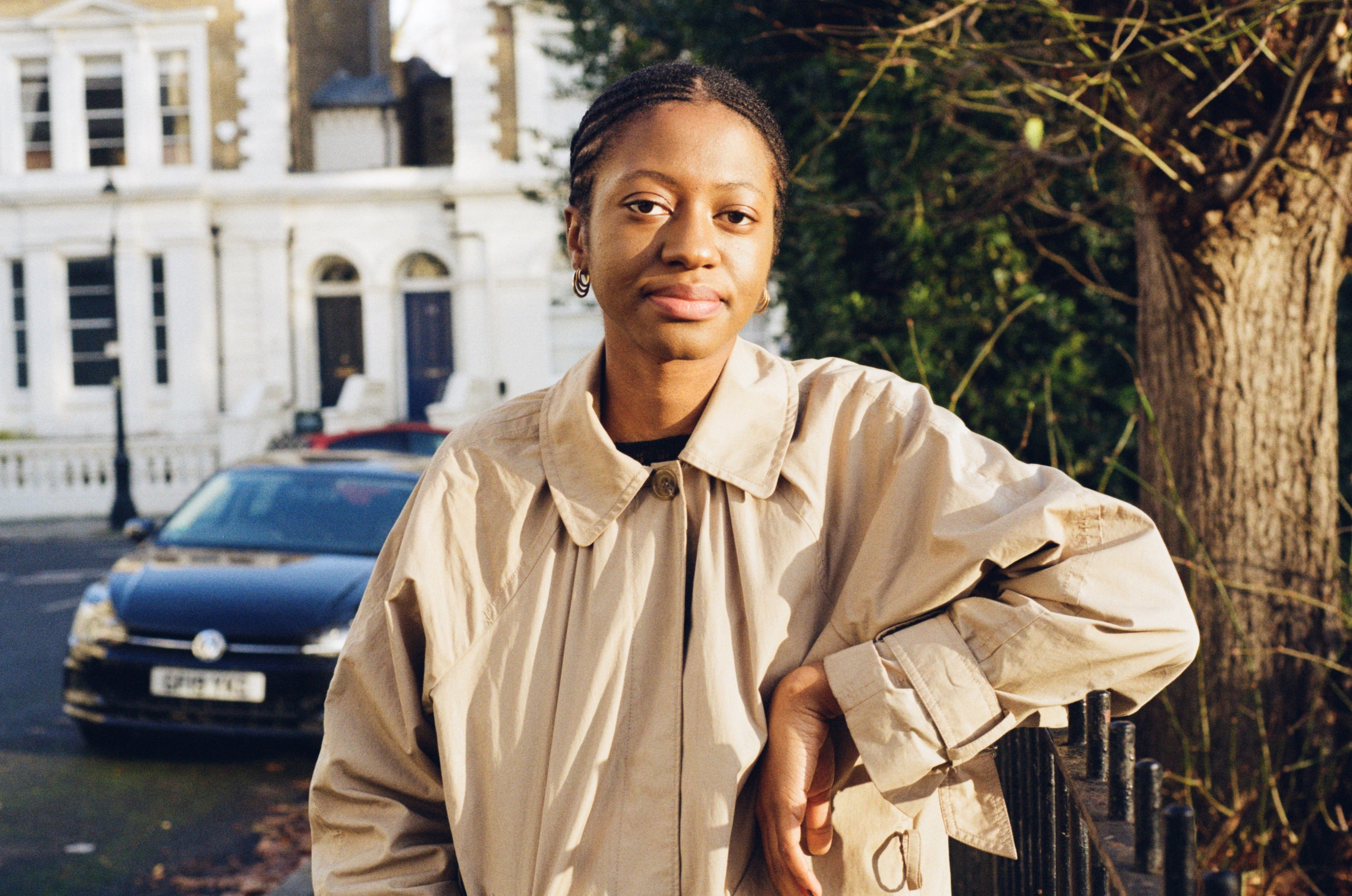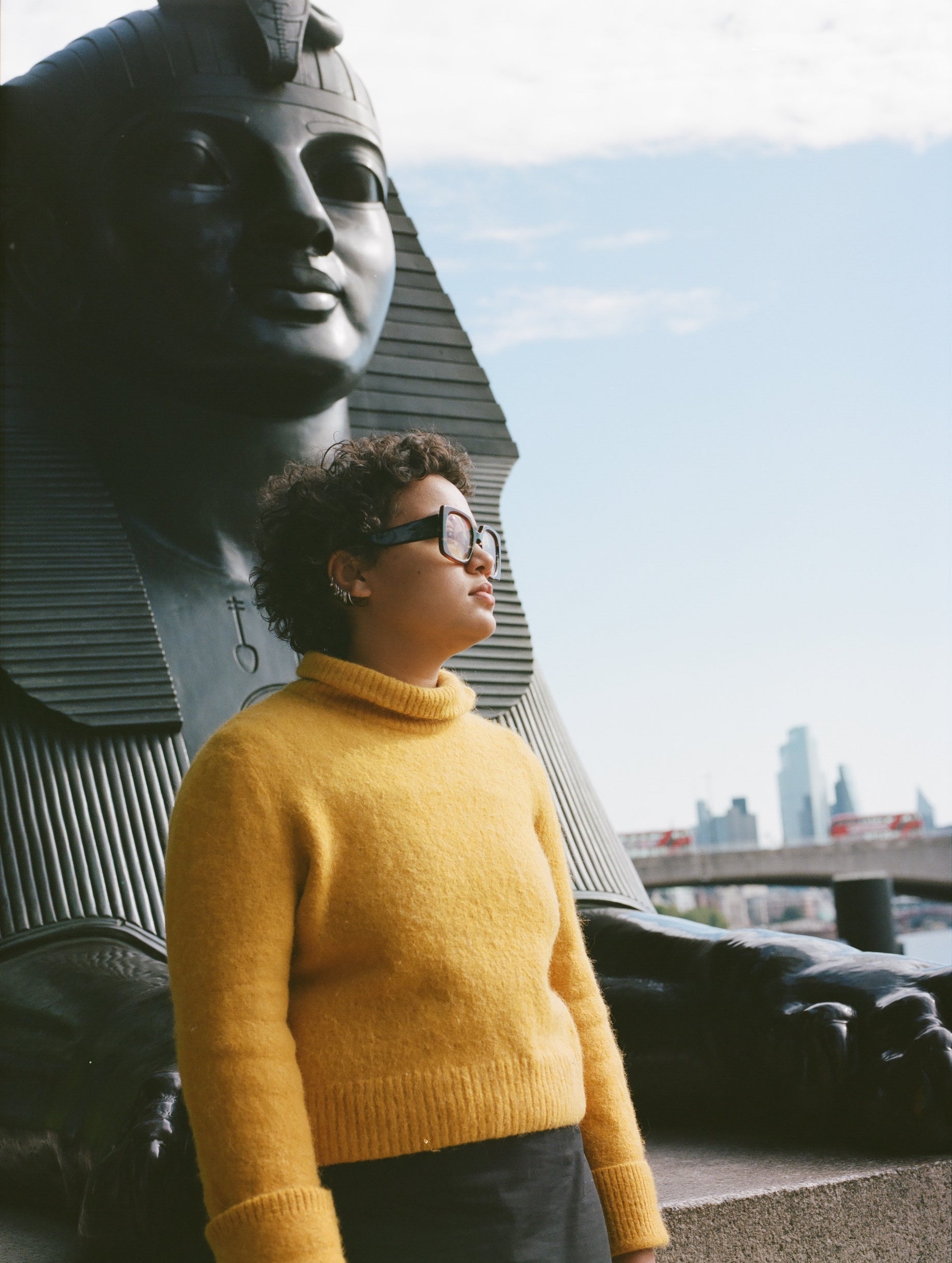The art world is full of middle class people and nepotism – that wasn’t my background
The London-based artist Ayo Akingbade is exhibiting two films about belonging, gentrification, and power in A Glittering City at London’s Whitechapel Gallery

Coming back to London’s Whitechapel Gallery for my own show is a bit surreal. I think my 19-year-old self would be gobsmacked. I’d been part of the gallery’s youth collective, Duchamp & Sons, in 2014, for Bart Lodewijks’s White Li(n)es project – where he collaborated in workshops with local young people to create site-specific chalk drawings. Now, I’m exhibiting two of my own films: Dear Babylon (2019) and Fire in My Belly (2021), a new Whitechapel Gallery commission, in collaboration with the same gallery’s youth group. Both films look at a sense of belonging, urbanism, gentrification, power, and resilience.
We worked together for over six months to make Fire in My Belly, exploring issues of place, belonging, and displacement through workshops and field trips in East London.
There are a plethora of scenes that reveal what community means to us. We pay homage to the activist Claudia Jones at Highgate Cemetery – where she is buried – and I talk to Farouk Agoro, an architect who designed the colourful mural on Brixton Road Bridge, in order to look at how overlooked migrant legacies can be preserved. Through all these voices I try to reveal the dreams, anxieties, and activism of young Londoners.
I hate to be stereotypical, but my own feelings on issues of belonging are complex. In my early twenties, I just wanted to get away from Hackney. I felt like I was in a sinking ship. I went to primary school, secondary and sixth form there and then went to study film at the London College of Communication (LCC). For my postgraduate studies in Fine Art at the Royal Academy Schools, I was commuting to affluent Mayfair.
Even though I was going to different pockets of London, I never felt a sense of belonging. One area was wealthy, another poor, but I could never find my place in either.
Now at the age of 26, I have met a great mix of people and had some interesting experiences, but I still don’t seem to fit in anywhere. Talking to others, it’s a common experience; I wanted Fire in My Belly to shine a spotlight on this.
While Dear Babylon (2019) is a pseudo-documentary about a trio of art students eager to raise awareness about their neighbourhood, especially the lives of the tenants and maintenance workers on housing estates. The work is set against the backdrop of the future of social housing being threatened by a fictional AC30 Housing Bill whereby residents who can’t pay a fee of £18,000 will be evicted. It’s a device I use to highlight the lack of affordable housing when areas become gentrified.
Dear Babylon completes the social housing trilogy, No News Today, which also includes Tower XYZ (2016) and Street 66 (2018).
At the time, I was eager to make something that had a narrative-led story, but that was documentative in its approach. Often, traditional film festivals, programmers, and even executives don’t know how to categorise my work. They won’t give me funding to make it unless it's purely narrative. So in many ways, Dear Babylon was an act of rebellion. I allowed myself the freedom to express myself as I pleased without bowing down to conventions and conforming to stereotypes.

Whereas when I made Fire in My Belly, I didn’t feel like I had to prove anything. I’d earned my stripes – Dear Babylon premiered at London’s ICA, with good reviews. I have also just won the 2020 Brewers Award of £10,000 for my film after submitting it to Towner International, a new biennial exhibition of contemporary art at Towner Eastbourne.
I do believe social change is possible through art – but that isn’t the bottom line in everything I do. I just make things I like. I started my career at film school by creating biographical semi-essayistic films – very personal pieces relating to my history and family life. So my approach has always been intimate and it’s great when someone resonates with it.
Creating art is therapeutic for me; I can factor in all of my desires, vulnerabilities, and disbeliefs and earn a living from it. For me, that was always a dream. The art world is full of middle class people and nepotism – and that wasn’t my background. But after seeing Stephen Willats’s show, Concerning Our Present Way of Living, at the Whitechapel Gallery in 2014 – he was a pioneer of socially interactive and community engaged art in the 1960s and 1970s – I realised that I could be an artist. Before that show, I didn’t see art like that – I thought it was just paintings and sculpture.
Working with the youth collective was really refreshing; it felt like a homecoming. They were funny, serious, and had a great thirst for knowledge. I definitely saw myself in them. It wasn’t too long ago when I was in their shoes.
My hope for the future is to make feature films and continue to make art. I think the Covid pandemic opened my eyes to a lot of things, it gave me thinking time and a greater understanding of who I’m as an artist/individual. As much as I’m a realist, I’d say I’m surprisingly a hopeless optimist.
‘A Glittering City: Ayo Akingbade with Duchamp & Sons’ 19 May – 15 August 2021



Join our commenting forum
Join thought-provoking conversations, follow other Independent readers and see their replies
Comments